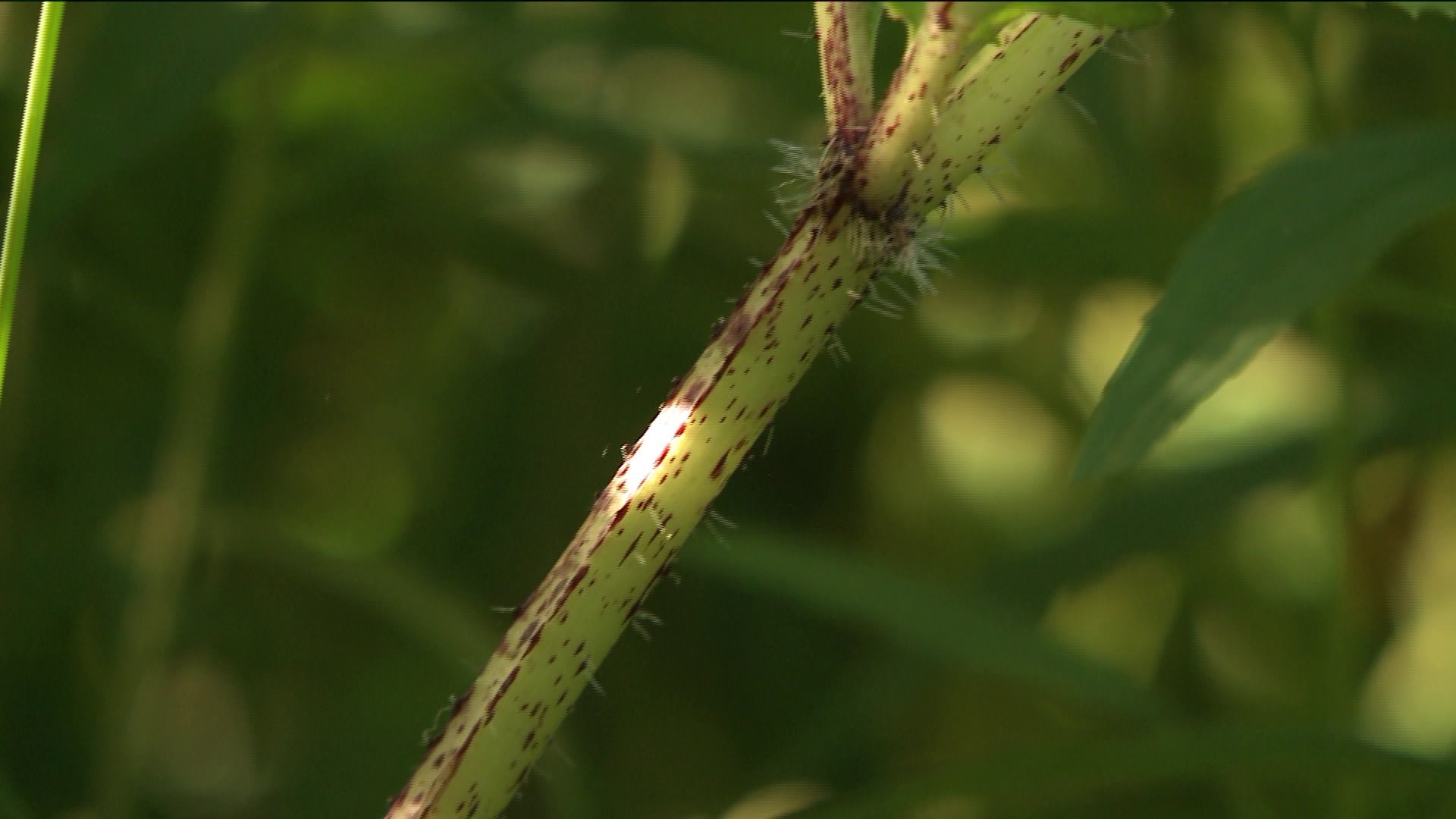COVENTRY -- Experts are cautioning Connecticut residents to be on the lookout for giant hogweed, a non-native, invasive and poisonous plant.
Hogweed is native to Russia, but first showed up in Connecticut in 2001. It is not widespread, but the plant’s serious side effects are prompting a warning.
“Your skin can break out in what looks like a sunburn and then develop possibly blisters and burns, and it can change the pigment of your skin for up to two years,” said Donna Ellis, Senior Extension Educator of Plant Science & Landscape Architecture at UConn.
Ellis has received dozens of calls and emails from residents, asking about possible hogweed on their properties. Ellis said the plant can live in a variety of habitats, including along roadsides and rivers.
“It is certainly something we want people to be aware of,” said Ellis.
Hogweed can grow as tall as 15 feet.
The plant’s stem has purple blotches with thick, course hairs. It has large, jagged leaves that can be up to five feet long. Hogweed looks very similar to cow parsnip, which is native to Connecticut and relatively not harmful.
“They’re [Cow parsnip] kind of just a smaller scale to giant hogweed,” said Ellis. “However, the stems are a bit different. The leaves are a bit different.”
The main way to tell right now if something is hogweed or not is to see if the plant is in bloom. Hogweed is not expected to bloom in Connecticut until mid-July.
If you do see hogweed or a plant you suspect may be hogweed, you’re encouraged to report it online to the Connecticut Invasive Plant Working Group.
Ellis said you should not try to weedwack hogweed, because that can release the plant’s poisonous sap.

